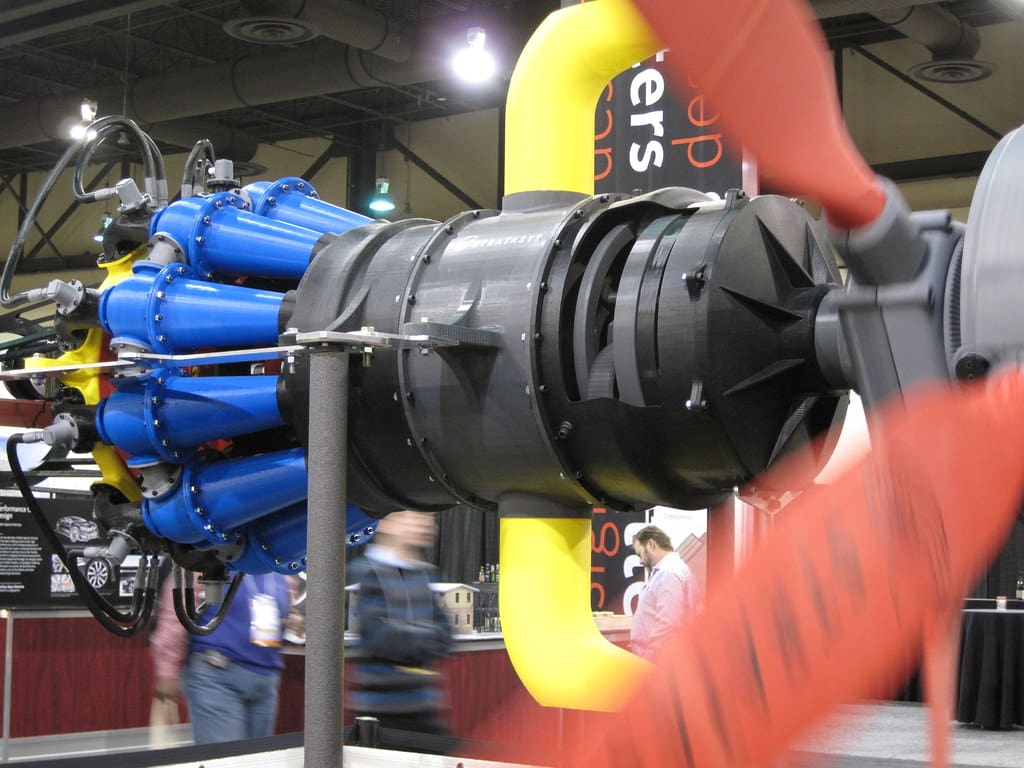3D printing, also known as additive manufacturing, has dramatically transformed the aerospace industry, one of its earliest and most significant adopters. This technology is not just complementing traditional manufacturing methods; it is revolutionizing them, enabling the creation of lighter, stronger, and more complex components crucial for aerospace applications. The ability to meet stringent aerospace standards while driving down costs and lead times is propelling 3D printing to the forefront of aerospace manufacturing.
Advantages of 3D Printing in Aerospace
3D printing brings several compelling advantages to aerospace manufacturing:
Weight Reduction: Aerospace engineers constantly seek ways to reduce the weight of components to increase fuel efficiency and payload capacity. 3D printing excels here by enabling the production of lattice structures and complex hollow parts that are substantially lighter than their conventionally manufactured counterparts.

Complexity and Integration: Traditional manufacturing can limit design complexity due to the constraints of subtractive processes and assembly requirements. 3D printing overcomes these limitations by allowing the creation of intricate designs in a single piece, reducing the need for multiple components and assemblies. This integration enhances the reliability and performance of aerospace parts.
Speed and Cost Efficiency: The rapid prototyping capabilities of 3D printing accelerate the design and testing phases, significantly cutting development time and cost. Furthermore, 3D printing minimizes material waste and streamlines the supply chain, contributing further to cost reductions.
Key Applications of 3D Printing in Aerospace
The applications of 3D printing in the aerospace sector are diverse and impactful:
Engine Components: 3D printing is used to produce complex parts such as fuel nozzles and turbine blades. For instance, GE Aviation has pioneered the use of 3D printed fuel nozzles in its LEAP jet engines, each unit being lighter and more durable than its traditionally manufactured counterparts.
Structural Components: Manufacturers are increasingly turning to 3D printing for airframe components made from titanium and other high-strength alloys. These parts often require complex geometries that are only feasible with additive manufacturing.
Prototyping and Tooling: 3D printing significantly reduces the time and cost associated with producing tooling for aerospace manufacturing, as well as allowing for rapid iteration and refinement of prototypes.

Customization for Small Batch Production: Aerospace often demands small-volume production for specific missions or custom aircraft. 3D printing provides a cost-effective solution for these requirements, eliminating the need for large and expensive inventories.
Challenges and Considerations
While 3D printing offers numerous benefits, there are challenges to its broader adoption:
Material Standards and Certification: The aerospace industry requires that all parts meet stringent safety and performance standards. Obtaining certification for 3D printed parts can be a lengthy and complex process, involving rigorous testing to meet regulatory approvals.
Technical Limitations: Current 3D printing technologies can be limited by the size of parts they can produce, the available materials, and the additional post-processing required to achieve the necessary surface finishes and structural integrity.
Future Trends and Innovations
The future of 3D printing in aerospace looks promising with several evolving trends:
Advanced Materials: There is ongoing development in creating new alloys and high-performance polymers specifically tailored for aerospace applications, enhancing the performance and durability of printed parts.
Integration with Traditional Manufacturing: Efforts are underway to combine 3D printing with conventional manufacturing methods to create hybrid techniques that maximize the benefits of both.
Space Applications: NASA and other space agencies are exploring the use of 3D printing for constructing spacecraft components directly in space, which could significantly reduce the costs and logistical challenges of space exploration.
3D printing is set to continue its transformative impact on the aerospace industry. With its unparalleled ability to produce complex, lightweight, and strong components quickly and cost-effectively, it is reshaping how aircraft and spacecraft are designed and built. As the technology advances, its integration into aerospace operations will likely deepen, further driving innovation and efficiency in this high-stakes field.








